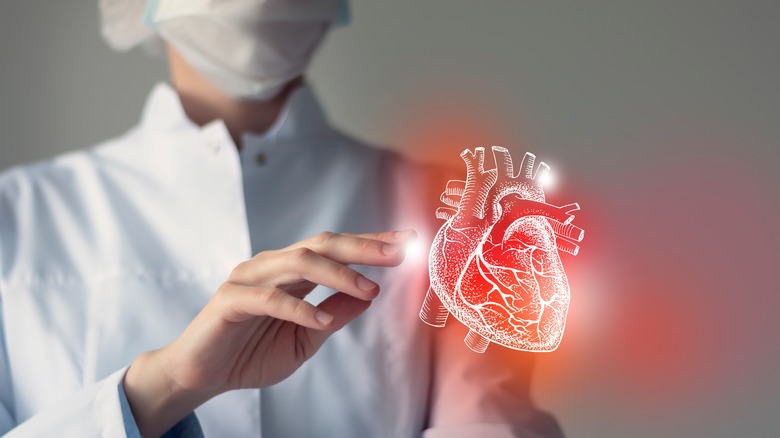What Does It Feel Like When You Have High Cholesterol?
According to the American Heart Association, cholesterol is a waxy substance sourced from your liver and the foods you eat. Although many people associate "cholesterol" with bad health, it's an essential component which the body uses to build cells and make hormones and vitamins. The problem arises when you have high levels of a certain type of cholesterol.
Cholesterol comes in two types, including low-density lipoprotein (LDL), often termed "bad" cholesterol, and high-density lipoprotein (HDL), usually known as "good" cholesterol (via MedlinePlus). Having unhealthily high amounts of LDL can leave you susceptible to numerous health problems. The Centers for Disease Control and Prevention (CDC) defines high cholesterol as above 240 mg/dL, a common medical condition affecting around 12% of adults in the U.S.
Numerous factors can cause cholesterol levels to shoot up beyond the borderline. Consuming fatty foods in excess causes the body to produce more LDL (bad cholesterol), as stated by the U.K. National Health Service (NHS). The source lists the main risk factors as genetics, obesity, smoking, lack of exercise, and alcohol and drug misuse. WebMD also mentions menopause and other underlying health conditions, such as diabetes and thyroid issues.
So what does it feel like when you have high cholesterol? Continue reading for further information.
Symptoms of high cholesterol
According to Cleveland Clinic, most people don't experience clear-cut symptoms when their cholesterol levels increase beyond normal. However, plaque (consisting of fats and cholesterol) can build up with time, leading to potential medical emergencies.
WebMD states that a heart attack is one such medical emergency that can happen. When plaque builds up in the walls, it narrows the arteries and limits blood flow to the heart. The less blood flow to the heart, the higher your chances of a heart attack.
Per Healthline, too much cholesterol building up in the arteries can also make you susceptible to an ischemic stroke, which the American Heart Association describes as the cutting off of blood supply to the brain. The CDC also notes that nearly 800,000 people in the U.S. have a stroke each year, and about 87% of these are ischemic strokes. Symptoms of ischemic stroke include numbness, blurred vision, unexplained headaches, and difficulty walking and speaking.
Prevention & treatment
There are various treatment options for high cholesterol. It would be best to discuss these options with your doctor. They might first suggest having a blood test to understand your cholesterol levels. The tests usually include the total cholesterol (T.C.), high-density lipoprotein (HDL), and LDL (low-density lipoprotein), details Family Doctor.
If your tests reveal unhealthy amounts of LDL, your doctor might recommend taking medications, such as statins, to reduce cholesterol production (via NHS). Although taking medication is one path, lifestyle changes might also be impactful. The CDC believes that eating healthily, quitting smoking, exercising regularly, and swapping highly saturated fatty foods for fiber-rich foods might help reduce cholesterol levels.
Another preventative measure involves minimizing stress, as stated by Mayo Clinic. According to WebMD, chronically high levels of stress are associated with increased cortisol production. This can strain your heart and cause LDL to rise above normal levels.
Because high cholesterol typically presents with no symptoms, the CDC recommends that most healthy adults get their levels checked at least once every 4 to 6 years, although people with certain risk factors should get checked more frequently.


